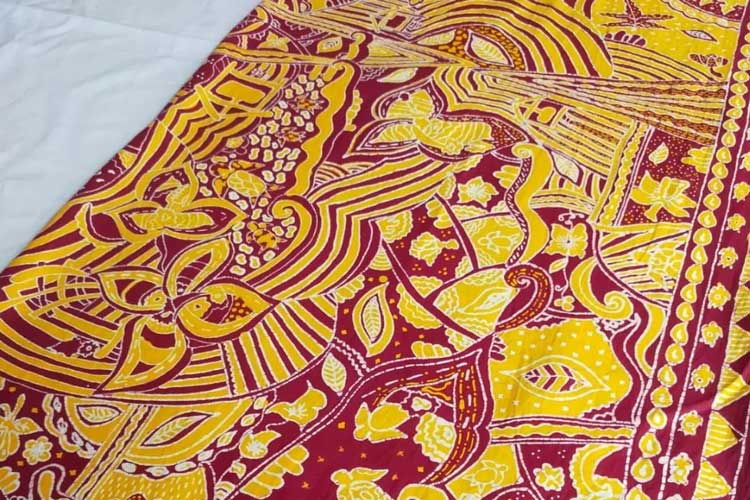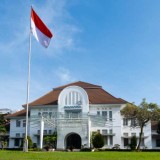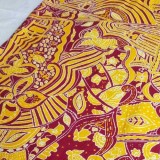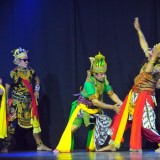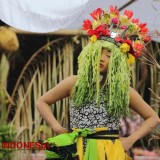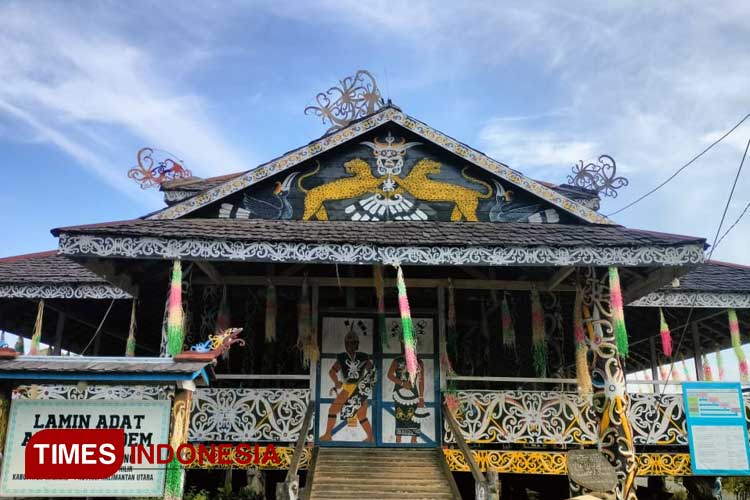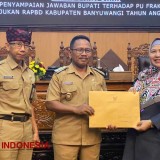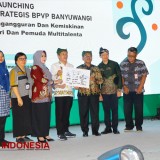TIMES BANYUWANGI, JAKARTA – Sukabumi, an area rich in natural beauty and cultural heritage, has a batik motif full of meaning, namely Batik Pancasona. This motif is not just a fabric decoration, but also reflects the philosophy of life and the natural beauty of Sukabumi.
Through symbols such as mountains, forests, oceans, beaches, and rivers, Batik Pancasona conveys a narrative that celebrates the environment and offers profound life lessons. Let's dive into the meaning behind this iconic motif with an explanation from Arif Johari, a local Sukabumi resident and a cultural practioner.
Edelweiss Flower: Symbol of Eternity and Spiritual Foundation
At the heart of the Pancasona motif is the symbol of the forest represented by the Edelweiss flower. Known as the flower of eternal life, Edelweiss is not just a decorative element. It symbolizes the eternal spirit of the Sundanese people.
"The five petals of the Edelweiss flower symbolize the five pillars of Islam, which are the foundation of faith for Muslims here," explained Arif Johari. The connection between this flower and spiritual values reminds us of the importance of respecting and preserving nature.
Edelweiss also teaches us about the balance between human desires and environmental preservation. "Despite its symbolic value, picking Edelweiss flowers is illegal. Its beauty should be enjoyed in its natural habitat, not exploited," Johari continued.
Ocean Waves: A Metaphor of Resilience and Humility
The sea is another prominent symbol in the Pancasona motif, depicted through the surging waves. "The five waves in this design represent the five important elements of Sukabumi's natural landscape—mountains, forests, rivers, beaches, and seas," Johari said.
Each element is a testament to the region's natural richness, but the waves themselves have a deeper meaning.
In Sundanese philosophy, the sea symbolizes resilience and humility. "There is a saying that goes, 'water, drop by drop, will erode a stone.' This teaches us that perseverance, even in the face of adversity, will eventually pay off," Johari said.
The waves reflect the spirit of resilience, reminding us to remain steadfast in the struggle, no matter how tough life’s trials may be.
Beach: A Place of Reflection and Spiritual Harmony
Behind the waves lies the beach, another key motif in Pancasona’s design. The beach in Sundanese culture symbolizes the concept of “Tritangtu,” or the balance between human will, power, and divine intervention.
“In Sukabumi, the beach is not just a place to relax, but a place where people reflect on their place in the world, seeking peace and clarity,” Johari explains.
The beach also represents the law of cause and effect, known in Sundanese philosophy as “hukum pepelakan.” Just as the tides are influenced by the moon and the wind, people’s lives are also shaped by their actions and decisions.
“We have a saying, ‘Tong adigung jadi jelema, bisi neunggar cadas,’ which means ‘Don’t be arrogant, you’ll hit a rock.’ The beach reminds us to remain humble and remember where we come from,” Johari adds.
River: A Symbol of Life’s Journey
The river motif in Batik Pancasona symbolizes the flow of life, from birth to death. Rivers flow through the landscape, representing the journey each individual takes throughout life. "Rivers in Sukabumi, such as the Cimandiri River, are often associated with myths and stories of transformation.
They start out with a strong current, passing through many obstacles, but as they approach the sea, their flow slows and becomes calmer. This reflects the stages of human life," Johari explains.
In Sundanese culture, water is considered the source of life. "We are like rivers," Johari continues. "We start life full of energy and enthusiasm, facing many challenges, but as we grow older, we learn to let go and flow more calmly towards our final destination."
Mountains: Guardians of Life
The most prominent symbol in the Pancasona motif is the mountain, which represents protection and aspiration. "Mountains are seen as guardians of life. They provide protection and resources, and stand tall as a symbol of strength and stability," Johari said.
For the people of Sukabumi, wearing Batik Pancasona is not only a celebration of their environment, but also a reminder of the philosophy of life that guides them. "Batik Pancasona is more than just art—it is a reflection of who we are, where we come from, and where we are going," he ended. (*)
Pewarta: Putri Rahmawati Nur Afifah
| Pewarta | : |
| Editor | : Khodijah Siti |
